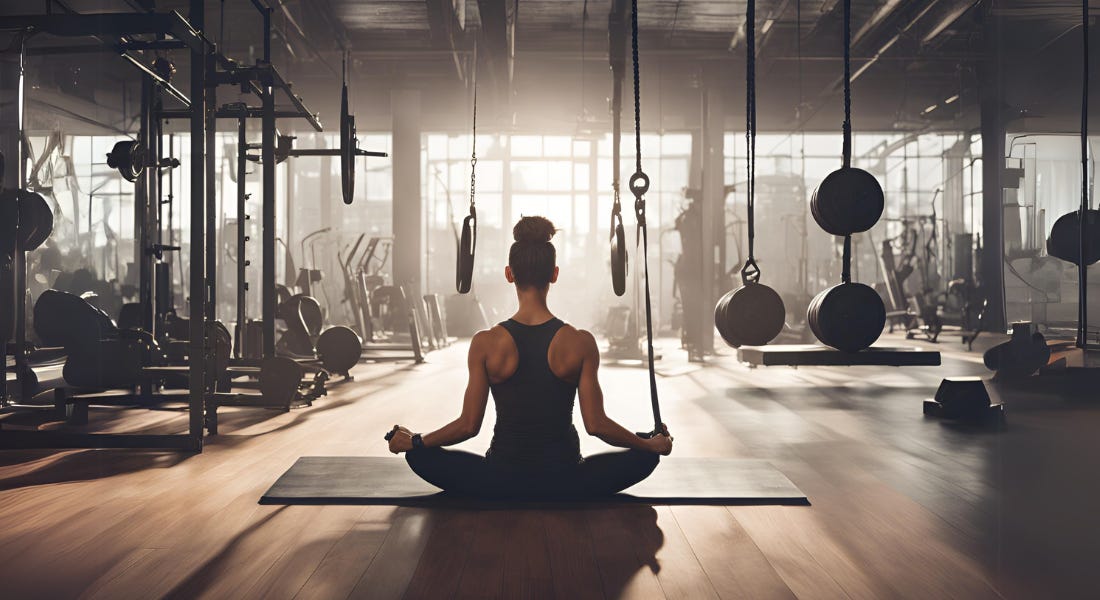Mindfulness 101: What is Mindfulness, Really?
How presence, mindfulness, & meditation work to empower lasting change
“All of humanity’s problems stem from man’s inability to sit quietly in a room alone.” – Blaise Pascal
Mindfulness is a buzzword these days.
You might’ve heard about its potential for reducing stress and anxiety, lowering blood pressure, improving sleep and pain management, increasing a sense of well-being, addressing symptoms of depression, and much more.1-3
However, if you’re just getting started, you might’ve found the topic overwhelming, the techniques difficult to implement in your daily life, or that you haven’t experienced the benefits you expected.
Unsure how to move past these stumbling blocks?
This article creates fertile soil for growth by unpacking the small—but important—differences between three key terms: presence, mindfulness, and meditation.
Let’s start by imagining an all-too-common scene.
The Power of the Present Moment
You’re driving down the road.
Suddenly, you snap back into reality.
You’re confused for a second before realizing you don’t remember any details about what occurred over the last few minutes.
You were caught in your head—trapped inside a movie you wholly made up.
Whether the plot was a tense moment between you and a coworker, what you should eat for dinner later, or concerns about paying rent (or all of the above), you were so disconnected from your physical surroundings that you were functionally blind to the external world.
Most of us have experienced similar ‘mindless’ states.
In fact, on average, we spend about 50% of our waking hours thinking about something other than what we’re doing.4
While thinking about the past and future can help us learn, plan, and reason, spending too much time inside our heads can also cause a lot of negative consequences, including draining our energy, increasing symptoms of stress and anxiety, and worsening depression.5
With all this said, the first step in becoming more mindful is simply returning your attention to the present moment. To actively experiencing what’s around you.
For example, when you noticed you were “checked out” earlier and returned your awareness to driving, you also returned yourself to the present moment.
Try this: Take three normal breaths. As you do, just pay attention to the physical sensation of breathing—the air filling and exiting your lungs. Your chest rising and falling. Your heart pumping the oxygenated blood throughout your body.
Your mind will wander. That’s totally ok. Simply notice when it does, say to yourself, “That movie got me!” and return your focus to the sensations of breathing.
Even in just a few breaths, you will see how your mind constantly jumps in and out of the ‘stream’ of the present moment, like a fish leaping in and out of a flowing river.
Next, let’s find out how present-moment awareness relates to mindfulness.
Mindfulness: Your Present-Moment Detective
Once you’ve returned your attention to the present, mindfulness is just maintaining curiosity about what you experience in the moment.
That’s it.
Try this: Return your attention to your breath, but this time, also notice your related thoughts, feelings, and sensations.
For example, you might feel a cold draft on your skin, recognize that you don’t really like the sensation, and have a strong urge to put on a sweatshirt. Or you might remember a driver who cut you off on the freeway today, feel your heart rate increase, and experience a strong urge to retaliate in some way. Or you might think of a trusted friend, feel your body relax, and experience a desire to reach out and tell them how much they mean to you.
Some of these feelings will be stronger than others, and some will be more pleasant than others.
Either way, try not to judge your thoughts, feelings, and sensations. Do your best not to label them as ‘bad,’ ‘whatever,’ or ‘good.’
Instead, think of each one as a cloud floating through the sky or a leaf floating downstream. As they pass, notice their details, like their size, shape, and color, but also recognize that they are separate from you. This means you don’t have to latch onto or follow them wherever they go.
Once you’re finished, write down what you noticed on a piece of paper. This can help you further crystallize your awareness of how your thoughts, feelings, and sensations impact one another.
Now, let’s discuss how presence and mindfulness culminate in meditation.
Meditation Works Out Your Mindfulness Muscles
Presence returns your awareness to your body, and mindfulness explores what your body and mind experience in the moment. How, then, does meditation fit into the equation?
It’s super simple: Meditation involves consciously setting aside time to practice mindfulness—like going to a gym designed to strengthen your "presence" and "awareness" muscles.
Unlike working out your physical muscles, though, where you strictly adhere to specific exercises, there’s no single ‘right’ way to meditate. The practices can look very different, depending on your goals and preferences. Common examples include:
Body scan – Focusing on physical sensations in specific areas of your body, starting with your toes and moving up toward your head
Emotion-centered – Focusing on a specific emotion, whether uplifting or challenging
Vision-centered – Focusing on something you see, either visually or imaginative
Mantras – Repeating a phrase or sound
Mindful movement – Maintaining presence and curiosity while moving, such as walking, doing the dishes, cleaning, etc.
Regardless of which type(s) work best for you, how can practicing meditation impact your life?
Studies have shown that people who regularly meditate can physically change the structure of their brain by increasing and strengthening the connections between neurons, resulting in improved sensory and emotional regulation, better thinking and concentration, and decreased age-related function loss.6
It’s a beautiful feedback loop. By deliberately allocating part of your day to practicing meditation, you steadily build your mental stability and clarity, making it easier to remain mindful while not meditating.
Together, improving mindfulness is a lot like learning to play music: presence is hearing the notes, mindfulness is recognizing the patterns and rhythms, and meditation is sitting down to practice the scales.
Try this: Set a timer for three minutes. Find a comfortable position and relax your body. Once you’re settled, take three deep breaths in through your nose and exhale each through your mouth. Then, return to breathing normally through your nose.
As you breathe naturally, simply pay attention to your thoughts, without latching onto them. Notice any emotions caused by your thoughts, and where in your body you feel them (e.g., tension in your neck or shoulders, warmth in your chest, ‘butterflies’ in your stomach, etc.).
When your mind wanders (and it will!), your only job is to notice, and gently return your attention to your natural breathing. There’s no need to control or change anything—you’re simply exploring with curiosity.
Once your three minutes are up, repeat the three deep inhalations/exhalations. Write down anything that stood out to you, and move into your day armed with greater clarity!
This is meditation in its simplest form: making time to practice presence and mindfulness.
A Note Before You Go: What Mindfulness Isn’t
As you can see, the basics of mindfulness are pretty straightforward. However, there are also some key misconceptions floating around that could hinder your progress.
Mindfulness is About Paying Closer Attention, Not Stopping Your Thoughts
The first misconception is that mindfulness involves stopping your thoughts or emptying your mind. It’s not.
Instead, mindfulness is about paying attention to your thoughts and noticing how they impact your emotions and sensations, without latching onto them, running away from them, or falling into the trap of becoming absorbed in the mental “movies” they create.
You Can Practice Mindfulness Without Meditation
Next, while setting aside time for meditation is crucial for building your mindfulness muscles, you can also practice sharpening your awareness many times throughout your day without sitting down to meditate formally, whether you’re eating, drinking, walking, or even washing dishes.
It's about bringing your full awareness to what you're doing in the present moment—not necessarily sitting in one position for hours.
Inner Peace Is Great, But It’s Not Always the Goal
Lastly, while meditation can promote relaxation and a sense of calm, its true power lies in the fact that it can also present prime opportunities to face your difficult or challenging emotions instead of resisting them, running from them, or bolstering unhealthy coping mechanisms for dealing with them.
The goal isn't to escape negative emotions but to develop different relationships with them through awareness and acceptance.
Stay tuned for the next 101 article, where we’ll dive deeper into the basics of mindfulness!








Great indepth article! I've been meditating for about 10 years now, but I always enjoy looking at the practice again with a beginners mind